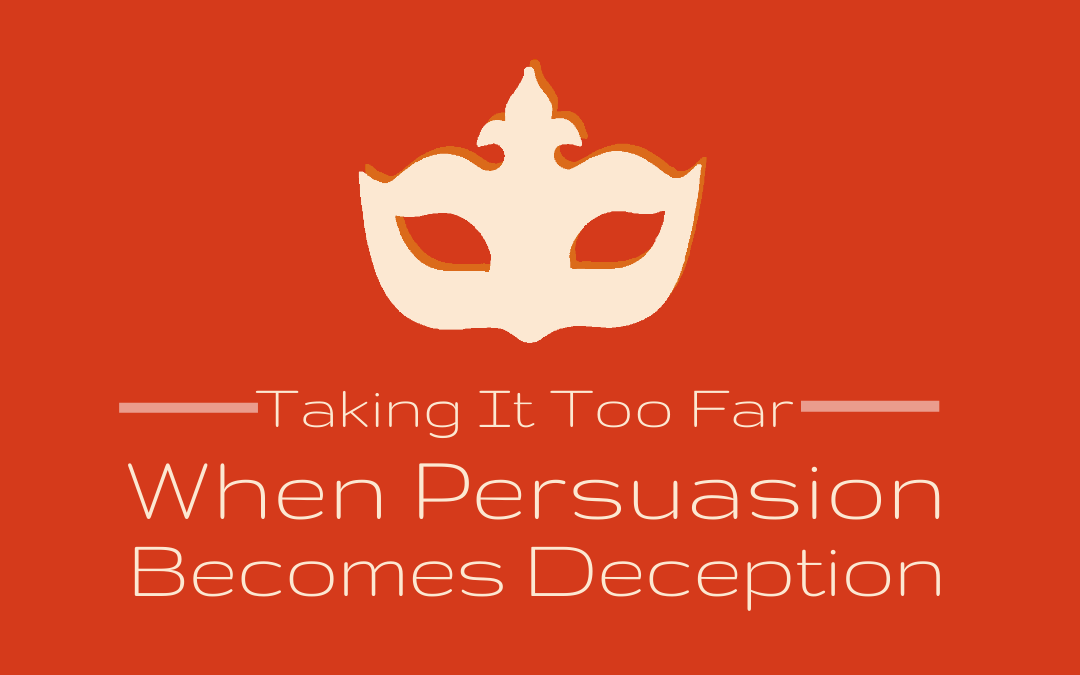Curated by Harry Brignull, freelance UX consultant, user researcher, and expert witness. Harry has a PhD in Cognitive Science and is the founder of Dark Patterns, a site dedicated to naming and shaming websites that use deceptive user interfaces. Harry blogs at 90percentofeverything.com and tweets @harrybr.
When you develop an understanding of psychology and the principles of persuasion, you’re put in a position of great power. With this power comes responsibility. Okay, it’s a trite saying but a lot of product designers don’t seem to fully understand or realize this. Preselecting checkboxes, exaggerating social proof and scarcity, hiding key information in the small print – they’re effective at pushing your conversion rates, but is it really “persuasion” when the customer doesn’t know what’s going on? Somewhere along the line it transforms into deception and manipulation.
It’s easy for product owners to defer responsibility to AB test results. It somehow feels scientific to build a number of options and then use a random sample of a few thousand customers per design to find out which performs best. It’s easy to forget that each design you test has a level of honesty built into it. Dishonest designs will often beat honest ones in AB tests. For example, if your goal is to reduce the volume of monthly account cancellations, why not just hide the account cancellation feature? That’ll be the winning condition in the AB test, right? But is it the right thing to do?
Today’s lesson is about Dark Patterns: user interfaces that are purposefully designed to deceive and manipulate users.
This article gives a nice introduction to Dark Patterns, explaining the principles and giving a number of examples from the web. If you prefer video, watch this 20 minute talk instead.
Having taken in this material, you should track down a few Dark Patterns yourself, to test your powers of observation and analysis. Try going through the steps of buying a domain name on networksolutions.com without buying any upsells, and see if you can opt out of marketing communications. Do you see any Dark Patterns there? Then try going through the steps of buying a flight on jetstar.com, but without paying extra for seating.
Remember, the whole point of Dark Patterns is that they are designed to exist in a grey area where they are legal and are implemented to only catch out a small percentage of the population, not every single user.
Justfab.com is an online fashion retailer that offers a subscription service. In 2013, they suffered from a PR disaster having been accused of using Dark Patterns to trick users into taking out a monthly subscription when they believed they were buying a single product. What’s particularly interesting about this case is that they geographically targeted different versions of their UI to different countries. In Germany, the UI was very clear and honest, corresponding with Germany’s tight laws regarding online consumer rights. In the USA, where consumer laws are less well defined, they were accused of using a Dark Pattern. Read the discussion on hacker news for more information.
It’s important that you develop your own opinion on this matter. Were justfab.com acting ethically? What should they have done differently in order to stay within your definition of ethical design?
In recent years, game developers have found it increasingly hard to simply charge a reasonable price up-front for their games in app stores. Instead, they’ve seeing a lot of success in to free-to-play models where the user gets the initial experience for free, and then pays for various “optional” things as they play through the games. As you can imagine, there is a huge opportunity for Dark Patterns in designing games to coerce users into spending more money than they really intend. To start off your learning in this area, you should read about the psychology of casino slot machines, which has a lot in common with this sort of F2P game. Natasha Shull’s book Addiction by Design is a real eye-opener. This 30 minute presentation sums up many of her key points.
Having taken that in, you should read these articles on Free to Play game economics, Game Design Corruption, and, finally, Dark Patterns in the Design of Games.
Technology is becoming increasingly entwined with every aspect of our lives. Today, if there’s a website you don’t trust, it’s easy to just avoid that website. With the impending advent of smart billboards (famously portrayed in the movie Minority Report), it will become increasingly hard to shut such things out of our lives.
For example, the Acure digital vending machine has been in use in Toyko subways since around 2011. Using a camera, it deduces your age and gender and displays recommendations based on this data. Although they’ve never been accused of any unethical behavior, it’s not hard to imagine a future where a similar vending machine uses dynamic pricing to charge you more if you appear to be wealthy, or to hide good deals and promote more expensive options. After all, Orbitz.com has already been caught using a similar method – when they employed user agent detection to show more expensive deals to Mac users than to PC users. According to their Chief Data Scientist Wai Gen Yee, “Mac users tend to stay in more expensive rooms.”
It’s entirely feasible to imagine such practices will seep out into the real world. The research paper Dark Patterns in Proxemic Interactions explores a number of such scenarios.
Other Product Psychology Lessons
- Building Community Starts with Understanding People
- When Persuasion Becomes Deception
- Mastering Pricing Principles
- A Handy Behavioral Design Toolkit
- Onboarding Matters – Getting Users Engaged in your Product
- Dual Process Theory: Is Your Product the Elephant or the Rider?
- Web Psychology – The Science of Online Persuasion
- Developing User Empathy with Design Sprints
- Want To Be A Game Psychologist? What You Need to Know
- How to Do Effective User Research
- Context Driven Design (The “Context Effect”)
- Writing Copy for Your Reader’s Brain
- Designing Habit-Forming Products
- Games, Play, and Motivation
- How Scarcity & Impatience Drive Irrational User Behavior
- Should You Listen To Your Users or Your Data?
- Emotional Engagement – Designing with the Heart in Mind
- Product Psychology: The 3 Things Everyone Should Know About

